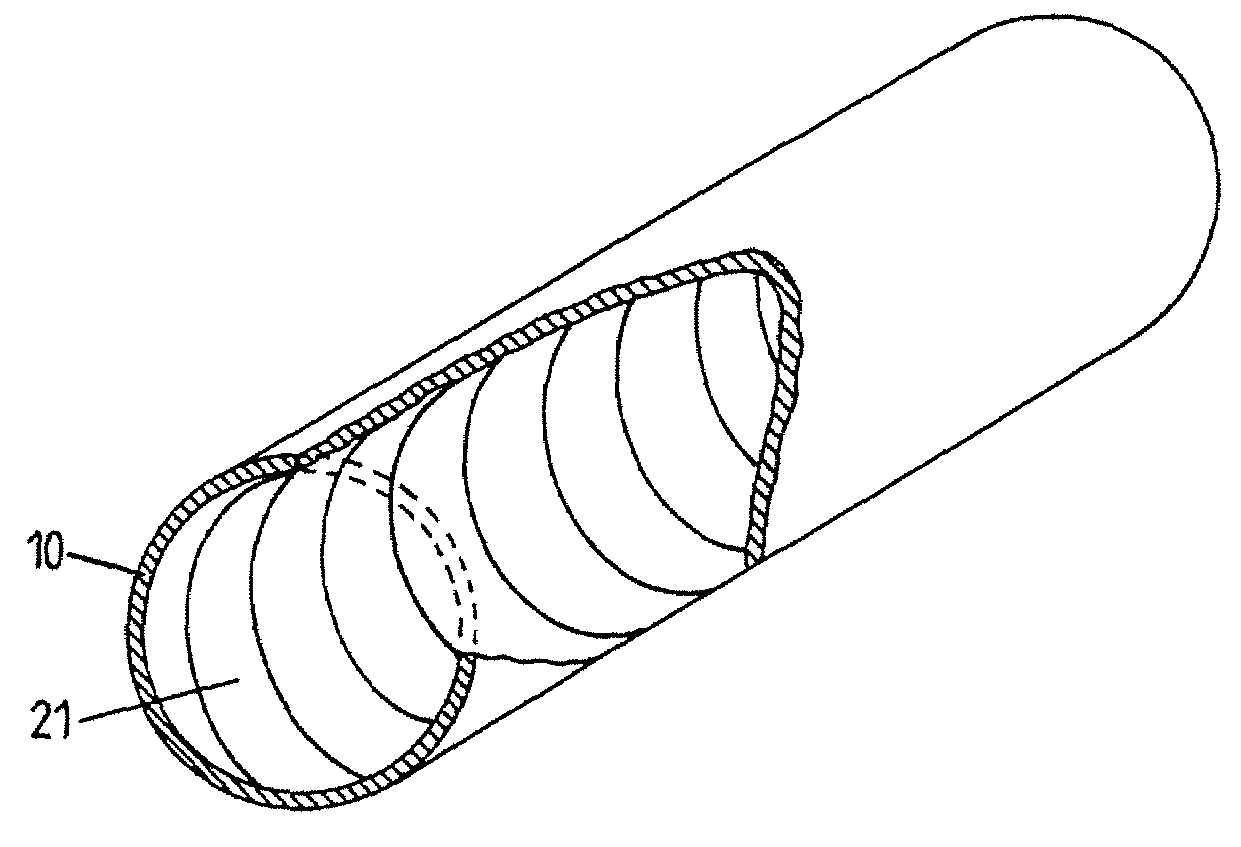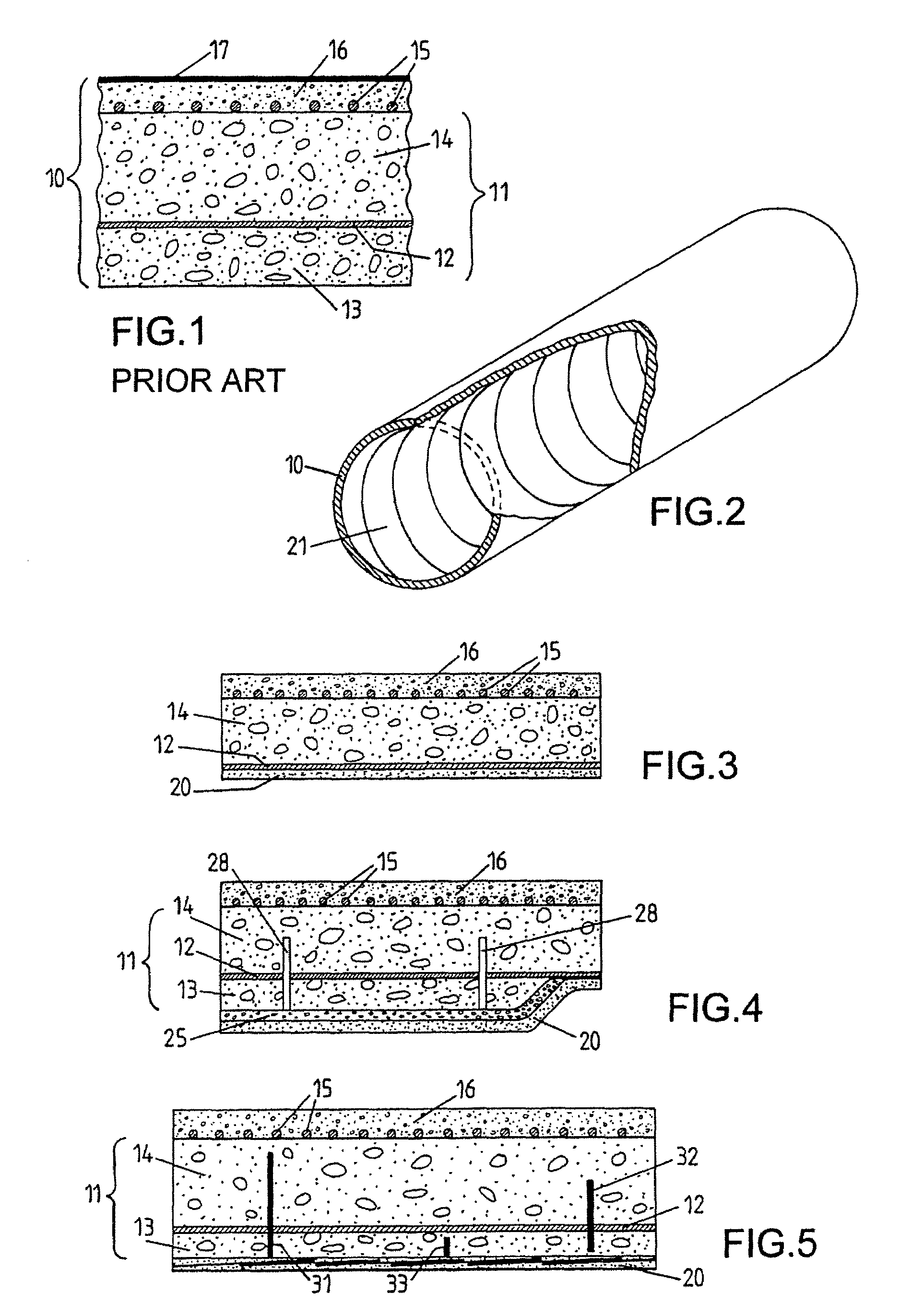Method of reinforcing an embedded cylindrical pipe
a technology of reinforcing pipes and cylindrical pipes, applied in the direction of pipe laying and repair, mechanical equipment, building repairs, etc., can solve the problems of not being designed to carry pressure, process can then accelerate, and exposed to corrosion risk, etc., to reduce the contamination of the liner through external agents, reduce the risk of corrosion, and reduce the effect of negative moments
- Summary
- Abstract
- Description
- Claims
- Application Information
AI Technical Summary
Benefits of technology
Problems solved by technology
Method used
Image
Examples
Embodiment Construction
[0034]Referring to the figures, a composite reinforcement 20 is arranged inside a damaged underground pipe. This reinforcement is composed of a band of fibers 21 wound according to a helicoidal path along the internal side of the pipe, as illustrated by FIG. 2 (in which the ground material surrounding the pipe is not shown).
[0035]The pipes in question are preferably embedded cylinder pipes as described previously with reference to FIG. 1. Their diameter is sufficient to allow the intervention of a human operator inside, for example 1.5 to 4.5 m. The service pressure in the pipe can be up to around 0.5 MPa.
[0036]The reinforcement fibers of the band 21 are made from a resistant material (resistance to breaking typically greater than 1500 MPa) and are of a high elastic module (typically between 100 and 400 GPa). Carbon fibers will generally be used for this (resistance to breaking in the range of 3000 MPa). By way of example the bands 21 have a width of 600 mm and they are composed of ...
PUM
 Login to View More
Login to View More Abstract
Description
Claims
Application Information
 Login to View More
Login to View More - R&D
- Intellectual Property
- Life Sciences
- Materials
- Tech Scout
- Unparalleled Data Quality
- Higher Quality Content
- 60% Fewer Hallucinations
Browse by: Latest US Patents, China's latest patents, Technical Efficacy Thesaurus, Application Domain, Technology Topic, Popular Technical Reports.
© 2025 PatSnap. All rights reserved.Legal|Privacy policy|Modern Slavery Act Transparency Statement|Sitemap|About US| Contact US: help@patsnap.com


